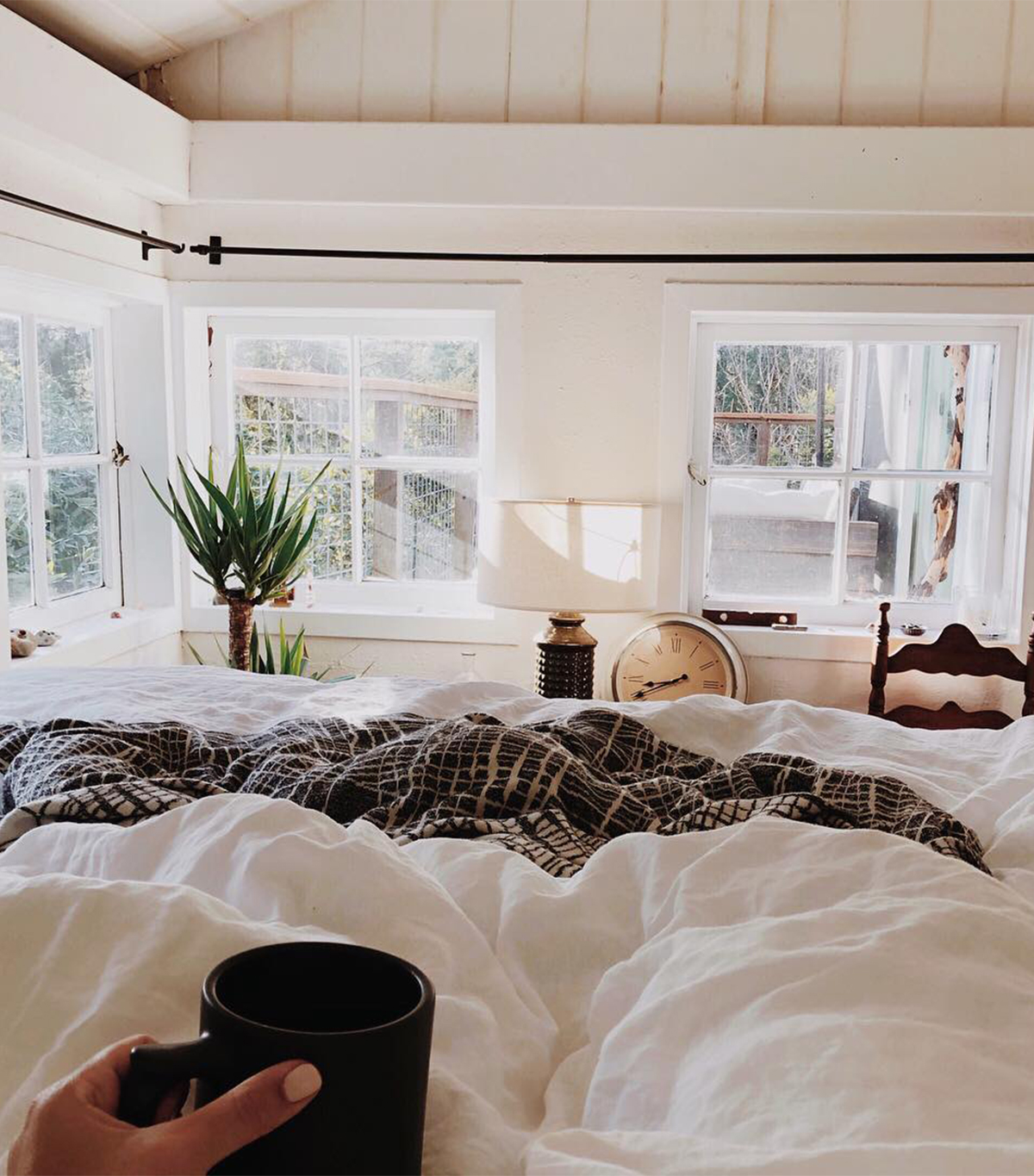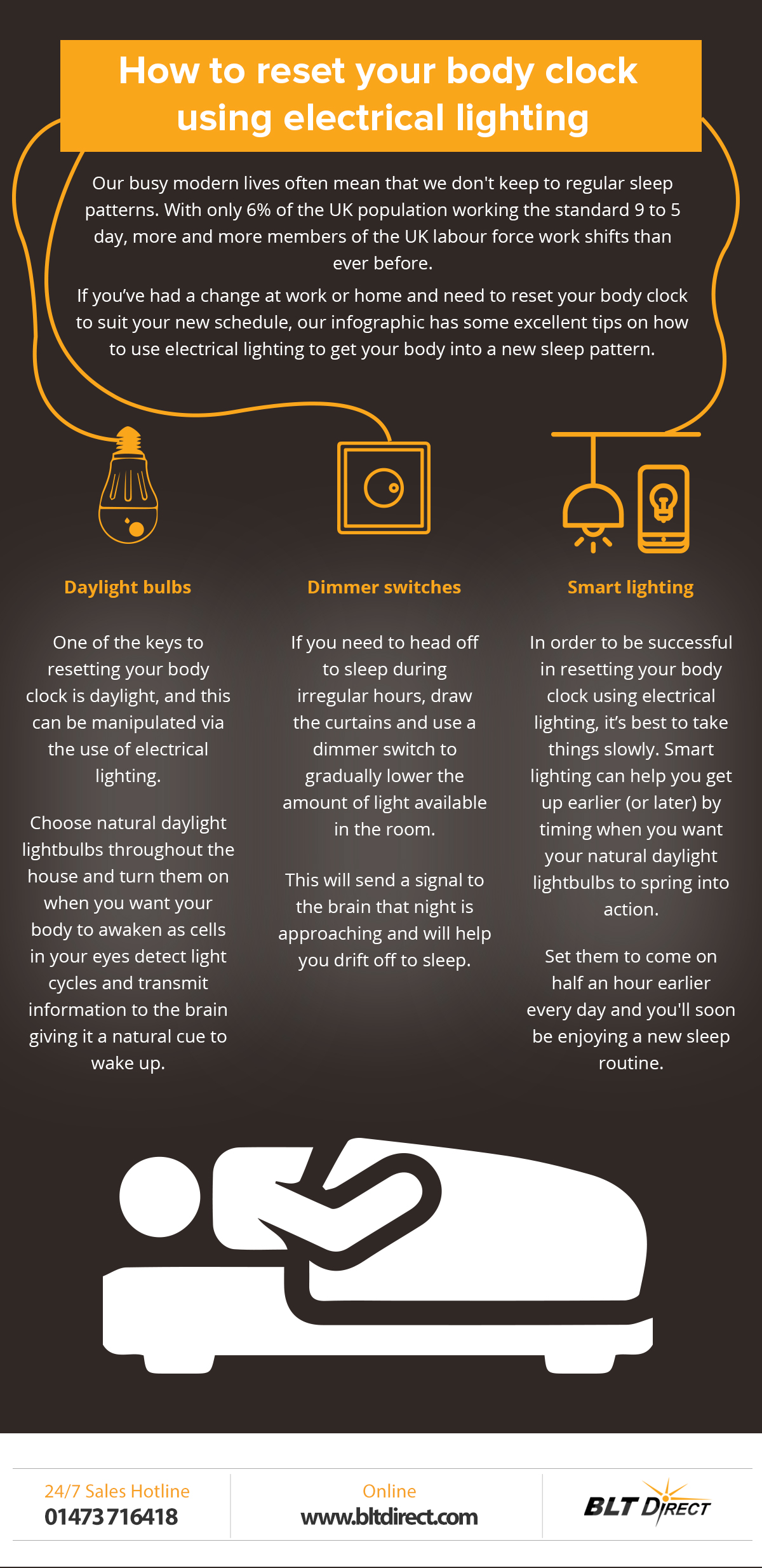Micro-Habits to Boost Morning Alertness (without coffee)

Are you tired of relying on that first cup of coffee (or maybe even the second!) just to feel like a functioning human in the morning? Do you wish there was a way to kickstart your day with energy and focus, without the jitters and eventual crash? There is! And it’s easier than you might think.
We all know that sluggish feeling when the alarm clock blares. Dragging ourselves out of bed, battling brain fog, and feeling utterly unproductive before the day has even truly begun can feel like a constant struggle. It can be frustrating to feel dependent on caffeine and searching for a better solution.
This article is for anyone who wants to ditch the caffeine dependency and unlock a naturally energized and focused morning. We'll explore simple, sustainable habits that can transform your mornings from a groggy mess into a productive powerhouse.
This article dives into the world of micro-habits – small, easily achievable actions – that can significantly boost your morning alertness without relying on caffeine. We'll explore practical strategies like sunlight exposure, mindful movement, hydration, and stimulating the senses. By incorporating these simple habits into your routine, you can experience a sustained energy boost, improved focus, and a more positive start to your day. Keywords include: morning alertness, micro-habits, caffeine-free, energy boost, focus, productivity, morning routine.
My Personal Journey to Alert Mornings
I used to be a complete coffee addict. The aroma, the ritual, the promise of a jolt – it was all part of my morning routine. I remember one particularly rough morning after a late night working on a project. I downed two cups before 9 am, only to find myself crashing hard by lunchtime, feeling even more tired and irritable than before. That’s when I realized I needed to find a healthier way to wake up. I started experimenting with small changes, one at a time. First, I made it a point to open my blinds as soon as I woke up to let the natural light flood in. Then, I started stretching for just five minutes before even getting out of bed. The results were surprising! I felt more awake, more focused, and less dependent on that caffeine hit. Over time, I added more micro-habits to my routine, like drinking a glass of water with lemon and practicing a few minutes of mindfulness. These small changes, when combined, made a HUGE difference in my overall energy levels and productivity throughout the day. It wasn't an overnight transformation, but the cumulative effect of these tiny habits was undeniable. The beauty of micro-habits is that they are so small and manageable that it's easy to stick with them, even on days when you feel overwhelmed or unmotivated. And that consistency is key to long-term success in building a healthier and more energized morning routine.
What Are Micro-Habits for Morning Alertness?
Micro-habits for morning alertness are tiny, easily achievable actions designed to jumpstart your day and combat morning grogginess. Unlike drastic lifestyle overhauls, these are small, incremental changes that you can easily incorporate into your existing routine. Think of them as baby steps toward a more energized and productive you. The key is to make them so simple that you can't say no, even on your laziest mornings. For example, instead of committing to a full 30-minute workout, start with just five minutes of stretching. Instead of eliminating coffee entirely, try replacing one cup with a glass of water with lemon. The goal is to create a chain reaction of positive behaviors that naturally boost your alertness and focus. These micro-habits work by stimulating various physiological processes in your body, such as increasing blood flow, regulating your circadian rhythm, and activating your nervous system. By consistently performing these small actions, you can gradually reprogram your body and mind to wake up feeling more refreshed and energized. Furthermore, these habits promote long-term well-being by reducing your reliance on stimulants and fostering a healthier lifestyle. They empower you to take control of your morning routine and create a positive foundation for the rest of your day.
History and Myths Surrounding Morning Alertness
The quest for morning alertness is as old as time itself. Throughout history, different cultures have developed their own rituals and remedies to combat morning sluggishness. In ancient Rome, people believed that a cold plunge would invigorate the body and mind. In Japan, the practice of "forest bathing," or spending time in nature, was considered a way to boost energy and reduce stress. While some of these traditions may seem outdated, they highlight the universal desire to start the day feeling refreshed and focused. One common myth is that coffee is the only way to achieve true morning alertness. While caffeine can certainly provide a temporary boost, it's not a sustainable solution and can often lead to negative side effects like jitters, anxiety, and dependence. Another myth is that you need to be a "morning person" to enjoy energized mornings. The truth is that anyone can train their body and mind to wake up feeling more alert, regardless of their natural sleep patterns. It's all about finding the right combination of micro-habits that work for you and consistently incorporating them into your routine. By debunking these myths and understanding the historical context of morning alertness, we can approach the topic with a more informed and open-minded perspective. This allows us to explore alternative strategies that are both effective and sustainable in the long run.
The Hidden Secret to Boosting Morning Alertness
The real secret to boosting morning alertness isn't about finding the one magic bullet, but rather about creating a synergistic combination of small, consistent actions. It's about understanding how your body and mind respond to different stimuli and tailoring your routine accordingly. The hidden secret lies in the power of consistency and mindful awareness. It's not enough to simply perform these micro-habits; you need to be present and engaged in the process. Pay attention to how your body feels, notice the subtle changes in your energy levels, and adjust your routine as needed. Another key element is to focus on creating a positive and enjoyable experience. If you dread your morning routine, you're less likely to stick with it. Find activities that you genuinely enjoy and that make you feel good. This could be anything from listening to upbeat music to spending time in nature to connecting with loved ones. Ultimately, the hidden secret to boosting morning alertness is about creating a personalized routine that works for you and that you can consistently maintain over time. It's about embracing the power of small changes and cultivating a mindful awareness of your own body and mind.
Recommendations for Energized Mornings
Start with sunlight exposure. Open your blinds or step outside for a few minutes as soon as you wake up. The natural light helps regulate your circadian rhythm and suppress melatonin production, which promotes alertness. Next, hydrate your body. Drink a glass of water with lemon or a herbal tea. Dehydration can contribute to fatigue and brain fog, so replenishing your fluids is essential for a clear and focused mind. Incorporate mindful movement into your routine. This could be anything from a few minutes of stretching to a brisk walk around the block. Exercise increases blood flow to the brain and releases endorphins, which can boost your mood and energy levels. Stimulate your senses. Take a cold shower or splash cold water on your face. The sudden change in temperature can jolt your system and increase alertness. Alternatively, try aromatherapy with invigorating scents like peppermint or citrus. Prioritize sleep hygiene. Ensure you're getting enough sleep each night and create a relaxing bedtime routine to improve your sleep quality. A well-rested body and mind are essential for feeling alert and energized in the morning. Finally, be patient and consistent. It takes time to build new habits, so don't get discouraged if you don't see results immediately. Stick with it, and you'll gradually transform your mornings from a groggy mess into a productive powerhouse.
Deeper Dive: Sunlight Exposure and Circadian Rhythm
Sunlight exposure plays a crucial role in regulating your circadian rhythm, which is your body's natural sleep-wake cycle. When you're exposed to sunlight in the morning, it signals your brain to suppress melatonin, a hormone that promotes sleepiness. This helps you feel more alert and energized. Sunlight also helps to synchronize your circadian rhythm with the natural day-night cycle, which can improve your sleep quality over time. Even on cloudy days, you can still benefit from sunlight exposure. The key is to get outside as early as possible in the morning. Aim for at least 15-20 minutes of sunlight exposure to reap the full benefits. If you live in a location with limited sunlight, consider using a light therapy box. These devices mimic the effects of natural sunlight and can be a helpful tool for regulating your circadian rhythm. However, it's important to consult with a healthcare professional before using a light therapy box, especially if you have any underlying medical conditions. The benefits of sunlight exposure extend beyond just morning alertness. It can also improve your mood, boost your immune system, and even reduce your risk of certain health conditions. So make it a priority to incorporate sunlight exposure into your daily routine, and you'll be well on your way to a healthier and more energized life.
Actionable Tips for Micro-Habit Success
Start small and be specific. Instead of saying "I'm going to exercise more," say "I'm going to do five minutes of stretching every morning." Make it easy to succeed by setting achievable goals. Link your new habits to existing ones. For example, drink a glass of water with lemon immediately after brushing your teeth. This creates a trigger that reminds you to perform the new habit. Use visual cues to remind yourself. Place a glass of water on your nightstand or leave your yoga mat out in the living room. These visual reminders will help you stay on track. Track your progress. Use a habit tracker app or a simple calendar to record your daily successes. Seeing your progress can be a powerful motivator. Reward yourself. Celebrate your milestones with small, healthy rewards. This could be anything from treating yourself to a relaxing bath to buying yourself a new book. Be patient and persistent. It takes time to build new habits, so don't get discouraged if you slip up. Just get back on track as soon as possible. Don't be afraid to experiment. Find what works best for you and adjust your routine accordingly. There's no one-size-fits-all approach to building micro-habits. Most importantly, be kind to yourself. Building new habits is a process, and it's okay to make mistakes along the way. The key is to keep learning and growing and to never give up on your goals.
Micro-Habit Troubleshooting: What To Do When You Slip Up
It's inevitable that you'll slip up from time to time when building new habits. Life happens, and there will be days when you're too tired, too busy, or simply not motivated. The key is to not let these setbacks derail your progress. Instead, view them as learning opportunities and use them to refine your approach. First, acknowledge your slip-up without judgment. Don't beat yourself up or dwell on your mistakes. Simply recognize that it happened and move on. Second, identify the trigger that led to the slip-up. Was it stress, lack of sleep, or a change in your routine? Understanding the trigger can help you prevent it from happening again. Third, adjust your routine accordingly. If you find that you're consistently missing a particular habit, it may be too ambitious or not well-suited to your lifestyle. Try making it smaller or simpler, or finding a different habit that's easier to incorporate. Fourth, forgive yourself and move on. Don't let one slip-up turn into a downward spiral. Remind yourself of your goals and reaffirm your commitment to building healthy habits. Finally, remember that progress is not always linear. There will be ups and downs along the way. The key is to stay consistent over time and to keep learning from your experiences.
Fun Facts About Morning Alertness
Did you know that your brain is actually more active during sleep than it is during the day? This is because your brain is busy processing information, consolidating memories, and repairing itself while you sleep. Studies have shown that people who get enough sleep are more productive, creative, and have better problem-solving skills. The "morning dip" in alertness is a real phenomenon. This is when your body temperature and hormone levels naturally drop, making you feel groggier and less focused. Sunlight exposure can help counteract this dip and boost your alertness. The smell of peppermint can actually improve your cognitive function and alertness. Studies have shown that peppermint aromatherapy can enhance memory, concentration, and mental clarity. Cold showers may sound unpleasant, but they can actually provide a significant energy boost. The sudden change in temperature stimulates your nervous system and increases blood flow to the brain. Exercise is not only good for your physical health, but it's also great for your brain. Regular exercise can improve your cognitive function, boost your mood, and reduce your risk of age-related cognitive decline. A healthy breakfast can make a big difference in your morning alertness. Eating a meal that's rich in protein and complex carbohydrates can provide sustained energy throughout the morning.
How to Create Your Own Micro-Habit Routine
Creating your own micro-habit routine is a personal and iterative process. It's about finding what works best for you and consistently incorporating those habits into your daily life. Start by identifying your biggest challenges with morning alertness. Are you struggling with brain fog, fatigue, or lack of motivation? Once you know your challenges, you can start brainstorming potential micro-habits that might address them. Choose a few habits to start with and make them as small and specific as possible. For example, instead of saying "I'm going to meditate," say "I'm going to meditate for five minutes every morning." Link your new habits to existing ones. This makes it easier to remember to perform the new habits. Use visual cues to remind yourself. Track your progress and celebrate your successes. Be patient and persistent and don't be afraid to experiment. As you become more comfortable with your routine, you can gradually add more habits or increase the intensity of existing ones. Remember, the goal is to create a sustainable routine that you can consistently maintain over time. It's not about perfection, it's about progress.
What If Micro-Habits Aren't Enough?
While micro-habits can be incredibly effective for boosting morning alertness, it's important to recognize that they may not be a panacea for everyone. If you're consistently struggling with severe fatigue, persistent brain fog, or other symptoms that interfere with your daily life, it's important to consult with a healthcare professional. There may be underlying medical conditions that are contributing to your symptoms, such as sleep apnea, thyroid disorders, or nutritional deficiencies. A doctor can help you identify the root cause of your problems and recommend appropriate treatment options. In addition to seeking medical advice, it's also important to address any lifestyle factors that may be affecting your alertness. This includes getting enough sleep, eating a healthy diet, managing stress, and avoiding excessive alcohol or caffeine consumption. Sometimes, making even small changes to your lifestyle can have a significant impact on your overall health and well-being. Remember, taking care of your physical and mental health is an ongoing process. It's about finding what works best for you and consistently prioritizing your well-being.
Listicle: 10 Micro-Habits to Instantly Boost Morning Alertness
1. Open your blinds and let the sunlight in.
2. Drink a glass of water with lemon.
3. Stretch for five minutes.
4. Take a cold shower or splash cold water on your face.
5. Listen to upbeat music.
6. Practice deep breathing exercises.
7. Do a quick meditation.
8. Diffuse essential oils like peppermint or citrus.
9. Write down three things you're grateful for.
10. Read a positive affirmation.
Question and Answer about Micro-Habits to Boost Morning Alertness
Question 1: How long does it take to see results from micro-habits? Answer: It varies from person to person, but most people start to notice a difference within a few weeks of consistently incorporating micro-habits into their routine. Question 2: What if I miss a day? Answer: Don't beat yourself up! Just get back on track the next day. Consistency is key, but occasional slip-ups are normal. Question 3: Can I combine micro-habits with coffee? Answer: Absolutely! Micro-habits can be a great way to reduce your reliance on coffee and improve your overall energy levels, but you don't have to eliminate it entirely if you enjoy it. Question 4: What if I don't have time for a full morning routine? Answer: The beauty of micro-habits is that they can be done in just a few minutes. Even just one or two small habits can make a big difference.
Conclusion of Micro-Habits to Boost Morning Alertness (without coffee)
Boosting your morning alertness without relying on coffee is entirely achievable through the power of micro-habits. By incorporating small, sustainable changes into your routine, you can unlock a naturally energized and focused start to your day. Remember that consistency, mindful awareness, and personalization are key to success. Experiment with different habits, find what works best for you, and celebrate your progress along the way. Ditch the caffeine dependency and embrace the power of micro-habits to transform your mornings and unlock your full potential.



